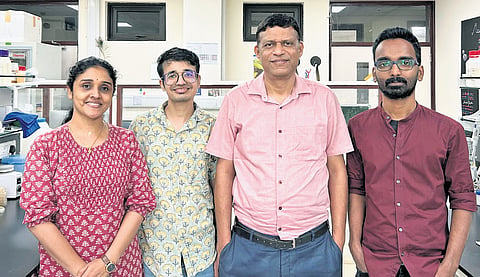

THIRUVANANTHAPURAM: Amid the rising challenge of fungal resistance to conventional drugs, researchers at the Indian Institute of Science Education and Research (IISER) in Thiruvananthapuram have come up with a finding that could offer a path to develop new non-toxic anti-fungal strategies.
The scientists have found that prolonged exposure to blue light, present in the visible spectrum, can damage the genetic material in budding yeast, which is an ideal single-cell fungal organism. Their finding has been published in the international open science publisher PLOS under the title ‘Loss of Heterozygosity Associated With Ubiquitous Environments In Yeast’.
The research team, led by Prof Nishant K T and comprising of Nikilesh Vijayan, Sameer Joshi and Praseetha Sarath, proved that chronic exposure to blue light caused extensive Loss Of Heterozygosity (LOH), which is a type of mutation. In LOH, one copy of a gene or chromosomal region is lost, potentially unmasking harmful mutations on the other copy.
The study showed that chronic blue light exposure triggered an oxidative stress response, inducing DNA damage and also overwhelming the cellular repair systems.
“This is the first time that such a mutational signature has been linked to blue light exposure, suggesting that even visible light, and not just high-energy radiation, can alter the genome over time,” Prof Nishant told TNIE.
According to Nishant, treatment of fungal infections on the skin, that are resistant to drugs, can be carried out using blue light even though it has limitations in treatment of internal infections. Also, blue light exposure could be used for decontamination of food and for sterilising surfaces, he added.
The study findings also highlight the need for further studies in higher organisms to assess whether the effects of chronic blue light exposure go deeper than what was previously thought. Blue light, emitted from mobile and computer screens, is conventionally known for its impact on human sleep cycles and vision, especially in the digital age.